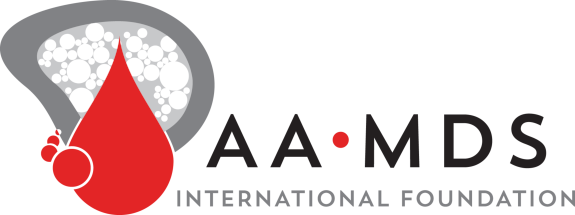How long do I have to live?
This is most people’s first question, along with “what can I expect to happen.” The doctor’s answer is called a prognosis (an educated guess about the likely course of your disease and how long you might live). Because each person is unique, and each person’s disease is different, a prognosis can be difficult to make. Also, how a disease progresses over time is unpredictable, and less is known about rare diseases than common diseases.
Whether you are an aplastic anemia aplastic anemia: (ay-PLASS-tik uh-NEE_mee-uh) A rare and serious condition in which the bone marrow fails to make enough blood cells - red blood cells, white blood cells, and platelets. The term aplastic is a Greek word meaning not to form. Anemia is a condition that happens when red blood cell count is low. Most… , MDS or PNH patient, you need to talk to your doctor about your prognosis. This may be hard to hear, but getting a prognosis will give you key information about the treatment decisions you need to make so you can plan for the future.
Prognosis guidelines based on current data
Aplastic Anemia
With standard treatments, about 8 out of 10 aplastic anemia patients get better. Standard treatments include immunosuppressive therapy immunosuppressive therapy: Immunosuppressive drug therapy lowers your body's immune response. This prevents your immune system from attacking your bone marrow, allowing bone marrow stem cells to grow, which raises blood counts. For older patients with acquired aplastic anemia, immunosuppressive drug therapy is the… with antithymocyte globulin antithymocyte globulin: ATG is an immunosuppressant, a drug that lowers the body's immune response. It is typically used with cyclosporine as the first-line immunosuppressive therapy (IS) to treat patients with acquired aplastic anemia. In some cases it is used as a treatment for patients with MDS and PNH. (ATG) with cyclosporine cyclosporine: Cyclosporine is used along with antithymocyte globulin (ATG), another immunosuppressant, for treating aplastic anemia and some other forms of bone marrow failure. and promacta, or a bone marrow transplant bone marrow transplant: A bone marrow transplant (BMT) is also called a stem cell transplant (SCT) or hematopoietic stem cell transplant (HSCT).The procedure replaces unhealthy blood-forming stem cells with healthy ones and offers some patients the possibility of a cure. But for many patients, a BMT is not an option due… . The chance for recovery depends on many factors, including how severe your case is and how you respond to treatment.
MDS
There are many different subtypes of MDS, which are identified by testing the blood and bone marrow bone marrow: The soft, spongy tissue inside most bones. Blood cells are formed in the bone marrow. . Your MDS subtype is a key factor in a doctor’s decision about your treatment and your prognosis (an educated guess about the likely course of your disease and how long you might live).
To figure out a prognosis for a given patient, doctors also use a prognostic scoring system. The most common one used today is the International Prognostic Scoring System International Prognostic Scoring System: A system that turns patient data into a score. The score tells how quickly a myelodysplastic syndrome (MDS) case is progressing and helps predict what may happen with the patient's MDS in the future. Also called IPSS. -R, or IPSS-R for short. This system looks at three things:
- Number of low blood counts you have
- Percentage of young white blood cells (blasts) in bone marrow cells
- Number of cytogenetic changes (abnormal gene changes) in bone marrow cells
This prognostic scoring system tells your doctor how severe your disease is and how likely it is that your MDS might become acute myeloid leukemia acute myeloid leukemia: (uh-KYOOT my-uh-LOYD loo-KEE-mee-uh) A cancer of the blood cells. It happens when very young white blood cells (blasts) in the bone marrow fail to mature. The blast cells stay in the bone marrow and become to numerous. This slows production of red blood cells and platelets. Some cases of MDS become… (AML). It also gives your doctor a general idea about how long you might live.
With current treatments, patients with lower-risk types of some MDS can live for 5 years or even longer. Patients with higher-risk MDS that becomes acute myeloid leukemia (AML) are likely to have a shorter life span. About 30 out of 100 MDS patients will develop AML. Most patients with AML need treatment soon after diagnosis because the disease often progresses fast. The initial goal is to put the patient into remission. The long-term goal is to cure the disease, although this is not always possible.
PNH
Many people with PNH live for decades. People with PNH who develop blood clots in key parts of the body or develop MDS (myelodysplastic syndromes) or AML (acute myeloid leukemia) may have a shorter life span.
Treatments available for PNH are helping people with PNH to live longer. Older research you may have come across state that PNH patients live an average of 15 to 20 years after diagnosis. More recent research shows that the PNH lifespan has climbed over the past 20 years. It’s possible that PNH patients – who rarely develop MDS or AML – will soon have a lifespan that is normal compared with people their own age.
It is always best to talk with your treating doctor about your prognosis. Remember, each patient is different.


